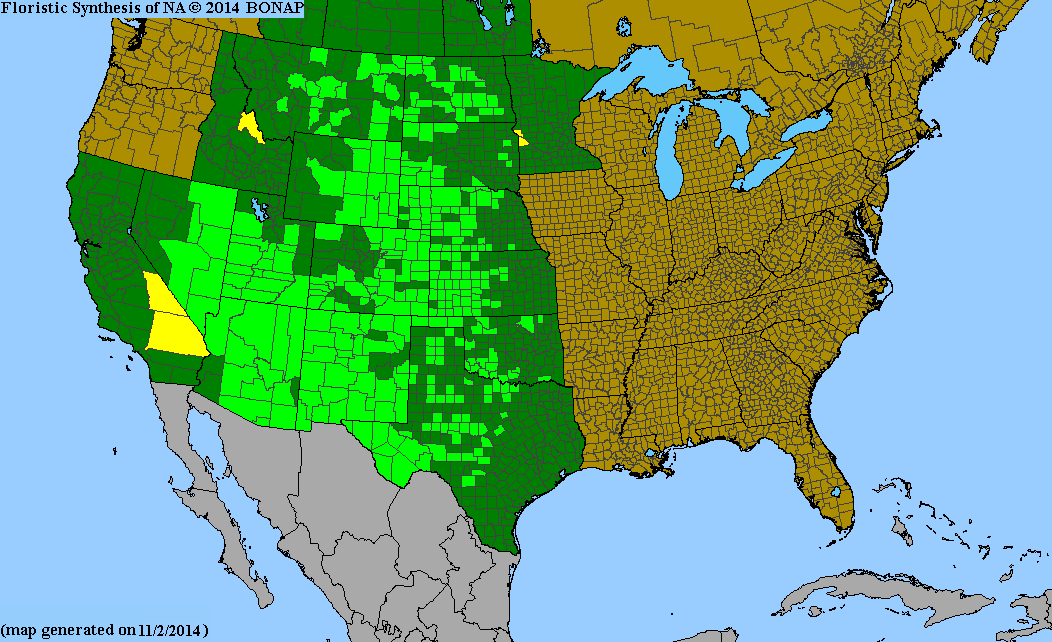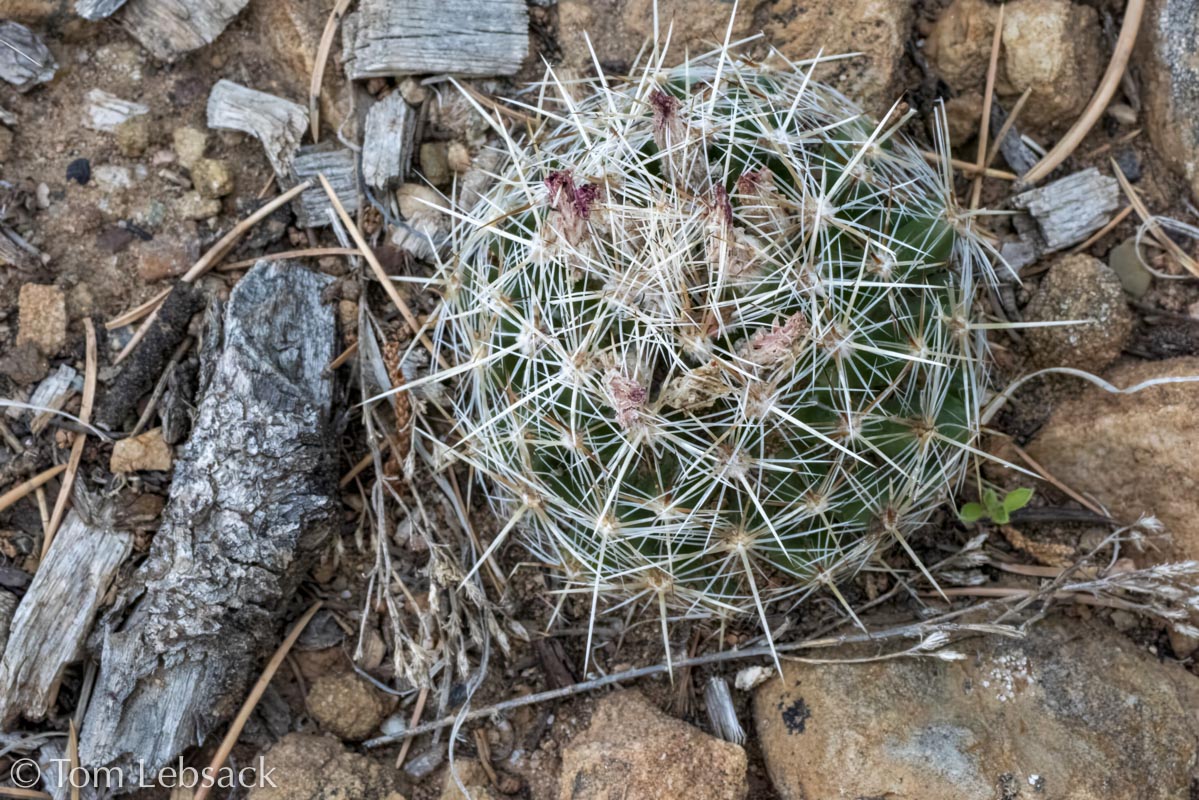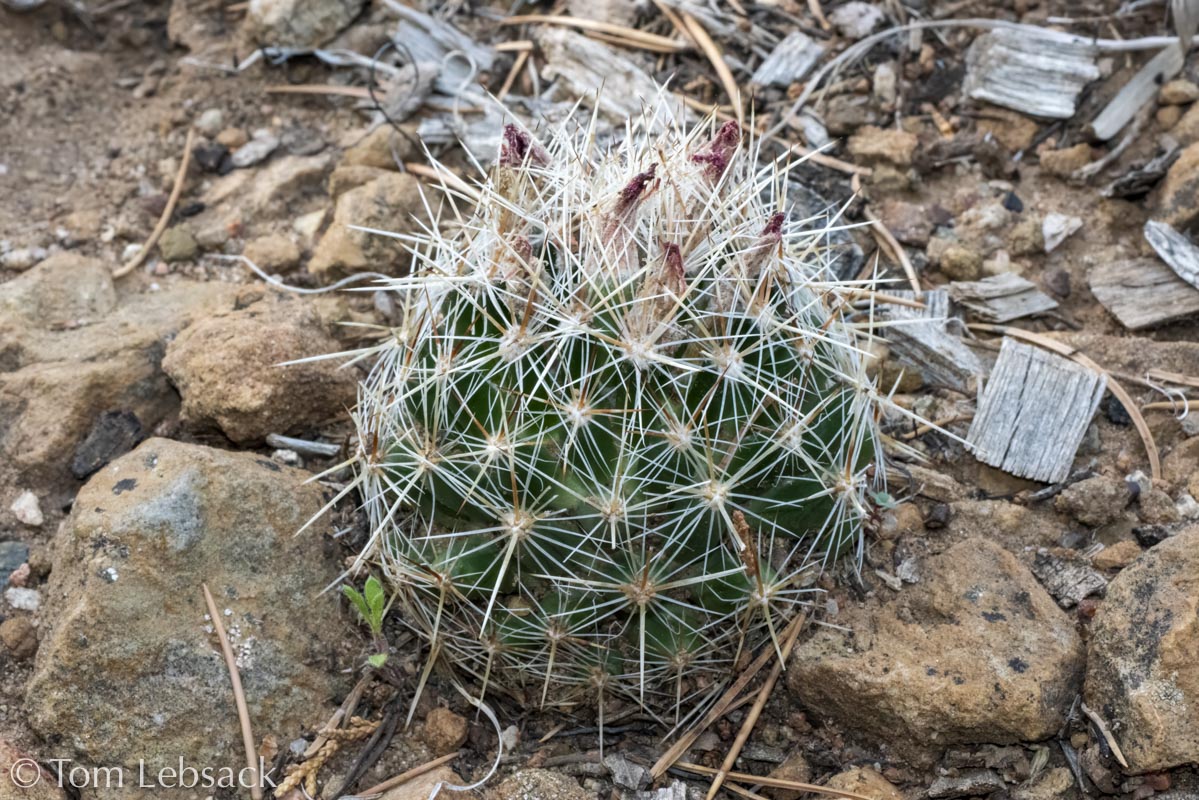Escobaria vivipara
(Pincushion Cactus)
| Scientific Name | Escobaria vivipara (Coryphantha vivipara) | USDA PLANTS Symbol | ESVI2 |
| Common Name | Pincushion Cactus, Spinystar | ITIS Taxonomic Serial No. | 502456 |
| Family | Cactaceae (Cactus) | SEINet Reference |
Click Here |
| Description | Life zones and habitat: Widespread throught the western half of the US; in Colorado, plains and foothills (4500 to 8300 ft.); dry, gravelly, sandy soils in open areas, canyons, hillsides, desert scrub and conifer forests. Plant: Single (or clusters of up to 20) low-growing spiny spherical or ovoid-shaped stem, or becoming a small cylinder with age, usually less than 2 inches in diameter but sometimes up to 8 inches, and 1 to 4 inches tall. Stems & Spines: No pads; stems as above with conspicuous tubercules protruding 1/4 to 1/3-inch and up 3/8 to 1-inch long; areoles are conical, often woolly; 3 to 10 central spines and 12 to 40 radial spines per areole, each 1/2 to 1-inch long, white with pink, reddish or black tips. Inflorescence: Relatively large cup-shaped flowers arising from near the tops of the stems, 1 to 2 inches across with bright pink, red, sometimes pale yellow-green inner tepals, usually spreading and recurved; outer tepals are conspicuously fringed; anthers are bright yellow (rarely orange-yellow); 5 to 13 erect or ascending, white to magenta, stigma lobes. Bloom Period: May to July. Fruit: Green, turning dull brownish-red, ovoid to obovoid, 1/2 to 1-1/8 inch long and 1/4 to 3/4-inch across. References: "Flora of Colorado" by Jennifer Ackerfield and American Southwest; Coryphantha vivipara in "Manual of the Vascular Plants of Texas" by Correll and Johnston and Flora of North America. Notes: (1) There are a large number of synonyms and supposed varieties and subspecies with differing numbers of spines, flower characteristics, etc. E. vivipara is currently the name accepted by most authorities. (2) This plant is very similar to Pediocactus simpsonii except that Escobaria's areoles are often woolly and have a groove extending from the areole on the front side; the ranges overlap, but Pediocactus can be found at much higher altitudes. |
BONAP Distribution Map Map Color Key Map Color Key |
Colorado Status: Native |
© Tom Lebsack 2025
Banner photo: Castilleja rhexifolia and a brewing storm over the San Juan Mountains
I try to provide accurate, up-to-date, and relevant information, but cannot guarantee the completeness or accuracy of any information presented on this website. I use authoritative references to insure high standards of accuracy and review and update the information frequently.

